Target Information
| Target General Information | Top | |||||
|---|---|---|---|---|---|---|
| Target ID |
T38012
(Former ID: TTDI02593)
|
|||||
| Target Name |
Inward rectifier potassium channel Kir3.1 (KCNJ3)
|
|||||
| Synonyms |
Potassium channel, inwardly rectifying subfamily J member 3; KCNJ3; Inward rectifier K(+) channel Kir3.1; GIRK1; G proteinactivated inward rectifier potassium channel 1
Click to Show/Hide
|
|||||
| Gene Name |
KCNJ3
|
|||||
| Target Type |
Literature-reported target
|
[1] | ||||
| Function |
This potassium channel is controlled byG proteins. Inward rectifier potassium channels are characterized by a greater tendency to allow potassium to flow into the cell rather than out of it. Their voltage dependence is regulated by the concentration of extracellular potassium; as external potassium is raised, the voltage range of the channel opening shifts to more positive voltages. The inward rectification is mainly due to the blockage of outward current by internal magnesium. This receptor plays a crucial role in regulating the heartbeat.
Click to Show/Hide
|
|||||
| BioChemical Class |
Inward rectifier potassium channel
|
|||||
| UniProt ID | ||||||
| Sequence |
MSALRRKFGDDYQVVTTSSSGSGLQPQGPGQDPQQQLVPKKKRQRFVDKNGRCNVQHGNL
GSETSRYLSDLFTTLVDLKWRWNLFIFILTYTVAWLFMASMWWVIAYTRGDLNKAHVGNY TPCVANVYNFPSAFLFFIETEATIGYGYRYITDKCPEGIILFLFQSILGSIVDAFLIGCM FIKMSQPKKRAETLMFSEHAVISMRDGKLTLMFRVGNLRNSHMVSAQIRCKLLKSRQTPE GEFLPLDQLELDVGFSTGADQLFLVSPLTICHVIDAKSPFYDLSQRSMQTEQFEIVVILE GIVETTGMTCQARTSYTEDEVLWGHRFFPVISLEEGFFKVDYSQFHATFEVPTPPYSVKE QEEMLLMSSPLIAPAITNSKERHNSVECLDGLDDITTKLPSKLQKITGREDFPKKLLRMS STTSEKAYSLGDLPMKLQRISSVPGNSEEKLVSKTTKMLSDPMSQSVADLPPKLQKMAGG AARMEGNLPAKLRKMNSDRFT Click to Show/Hide
|
|||||
| 3D Structure | Click to Show 3D Structure of This Target | AlphaFold | ||||
| ADReCS ID | BADD_A03957 ; BADD_A04007 ; BADD_A05962 | |||||
| Cell-based Target Expression Variations | Top | |||||
|---|---|---|---|---|---|---|
| Cell-based Target Expression Variations | ||||||
| Different Human System Profiles of Target | Top |
|---|---|
|
Human Similarity Proteins
of target is determined by comparing the sequence similarity of all human proteins with the target based on BLAST. The similarity proteins for a target are defined as the proteins with E-value < 0.005 and outside the protein families of the target.
A target that has fewer human similarity proteins outside its family is commonly regarded to possess a greater capacity to avoid undesired interactions and thus increase the possibility of finding successful drugs
(Brief Bioinform, 21: 649-662, 2020).
Human Pathway Affiliation
of target is determined by the life-essential pathways provided on KEGG database. The target-affiliated pathways were defined based on the following two criteria (a) the pathways of the studied target should be life-essential for both healthy individuals and patients, and (b) the studied target should occupy an upstream position in the pathways and therefore had the ability to regulate biological function.
Targets involved in a fewer pathways have greater likelihood to be successfully developed, while those associated with more human pathways increase the chance of undesirable interferences with other human processes
(Pharmacol Rev, 58: 259-279, 2006).
Biological Network Descriptors
of target is determined based on a human protein-protein interactions (PPI) network consisting of 9,309 proteins and 52,713 PPIs, which were with a high confidence score of ≥ 0.95 collected from STRING database.
The network properties of targets based on protein-protein interactions (PPIs) have been widely adopted for the assessment of target’s druggability. Proteins with high node degree tend to have a high impact on network function through multiple interactions, while proteins with high betweenness centrality are regarded to be central for communication in interaction networks and regulate the flow of signaling information
(Front Pharmacol, 9, 1245, 2018;
Curr Opin Struct Biol. 44:134-142, 2017).
Human Similarity Proteins
Human Pathway Affiliation
Biological Network Descriptors
|
|
|
There is no similarity protein (E value < 0.005) for this target
|
| KEGG Pathway | Pathway ID | Affiliated Target | Pathway Map |
|---|---|---|---|
| Circadian entrainment | hsa04713 | Affiliated Target |
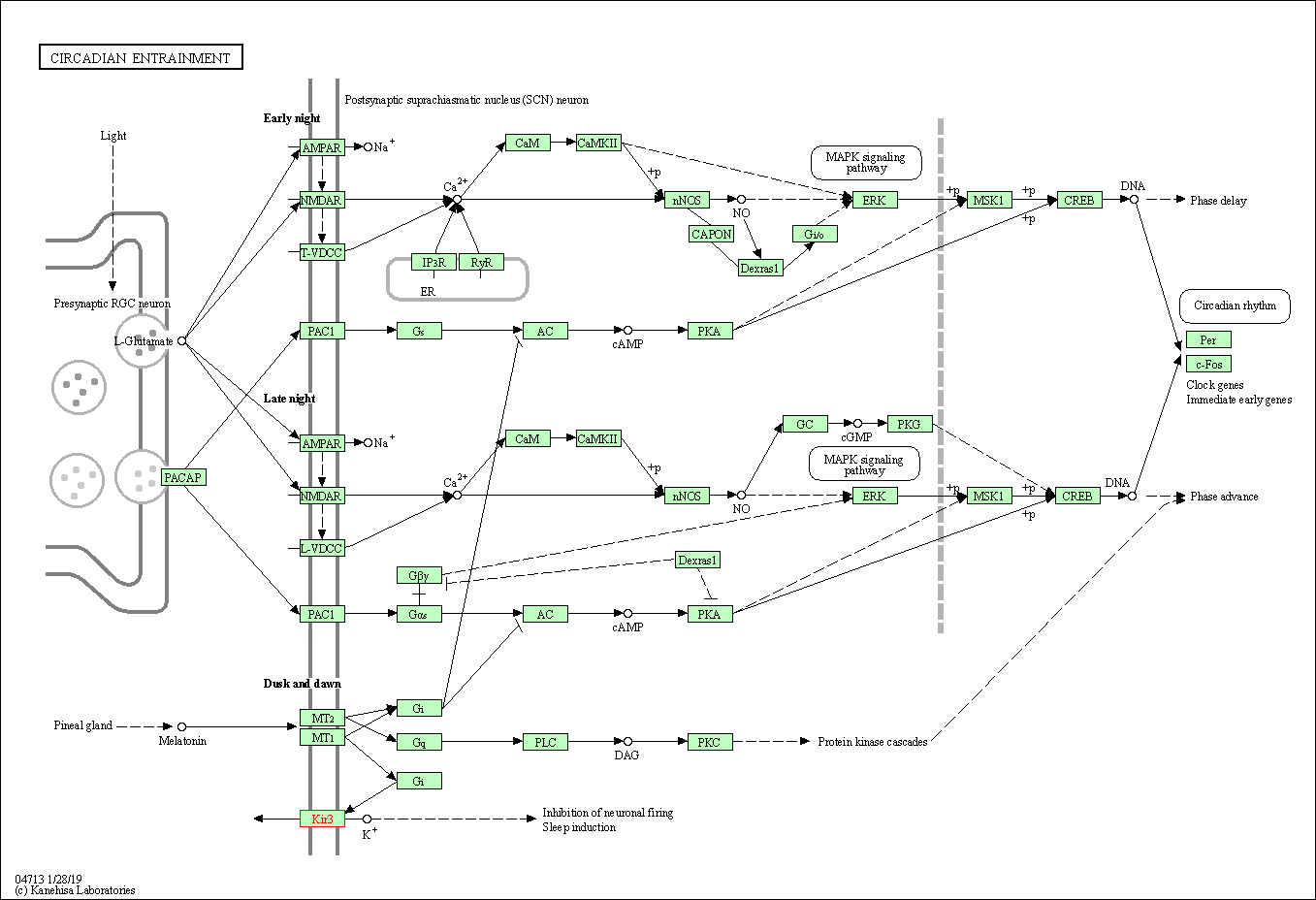
|
| Class: Organismal Systems => Environmental adaptation | Pathway Hierarchy | ||
| Retrograde endocannabinoid signaling | hsa04723 | Affiliated Target |
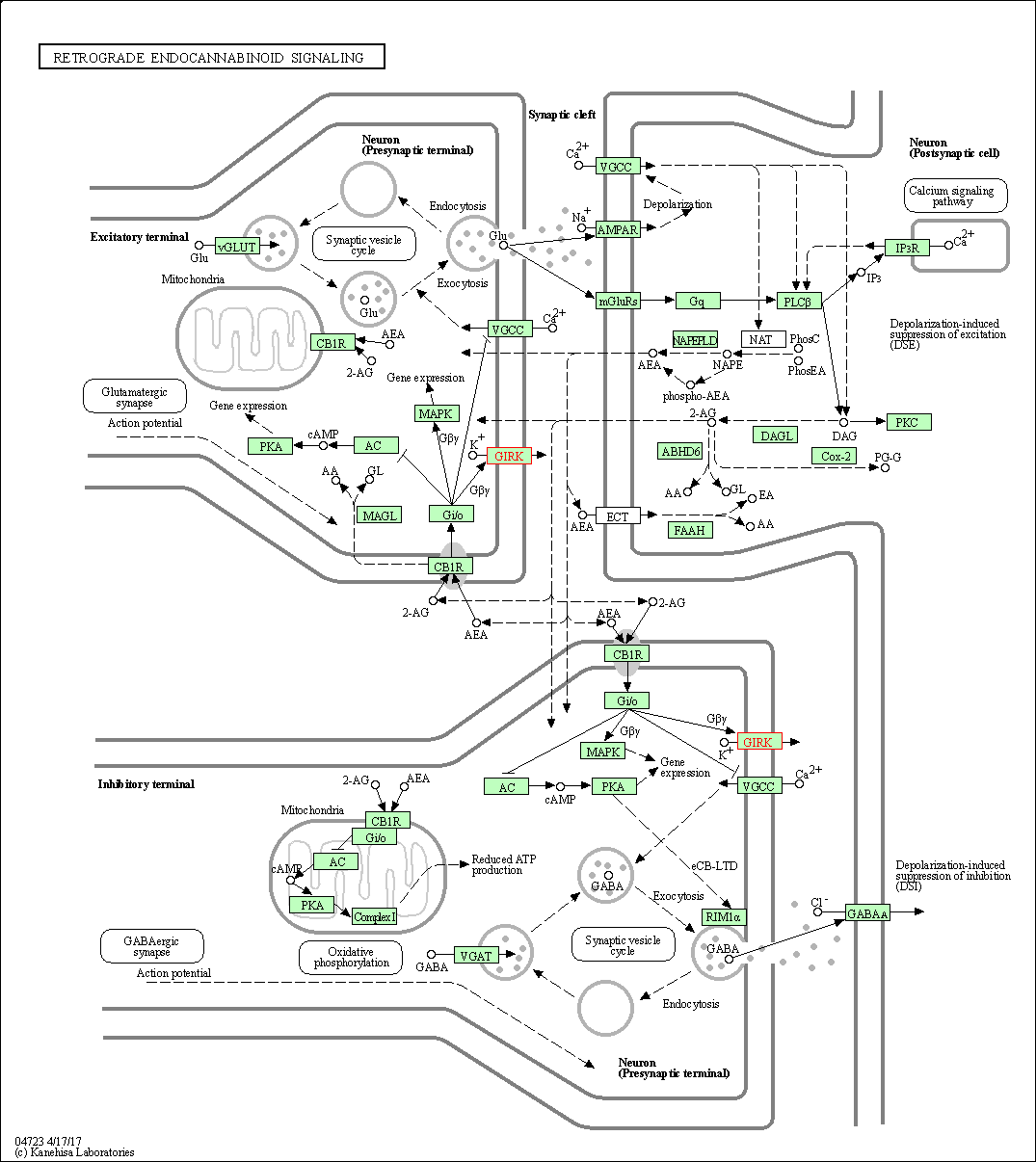
|
| Class: Organismal Systems => Nervous system | Pathway Hierarchy | ||
| Glutamatergic synapse | hsa04724 | Affiliated Target |

|
| Class: Organismal Systems => Nervous system | Pathway Hierarchy | ||
| Cholinergic synapse | hsa04725 | Affiliated Target |
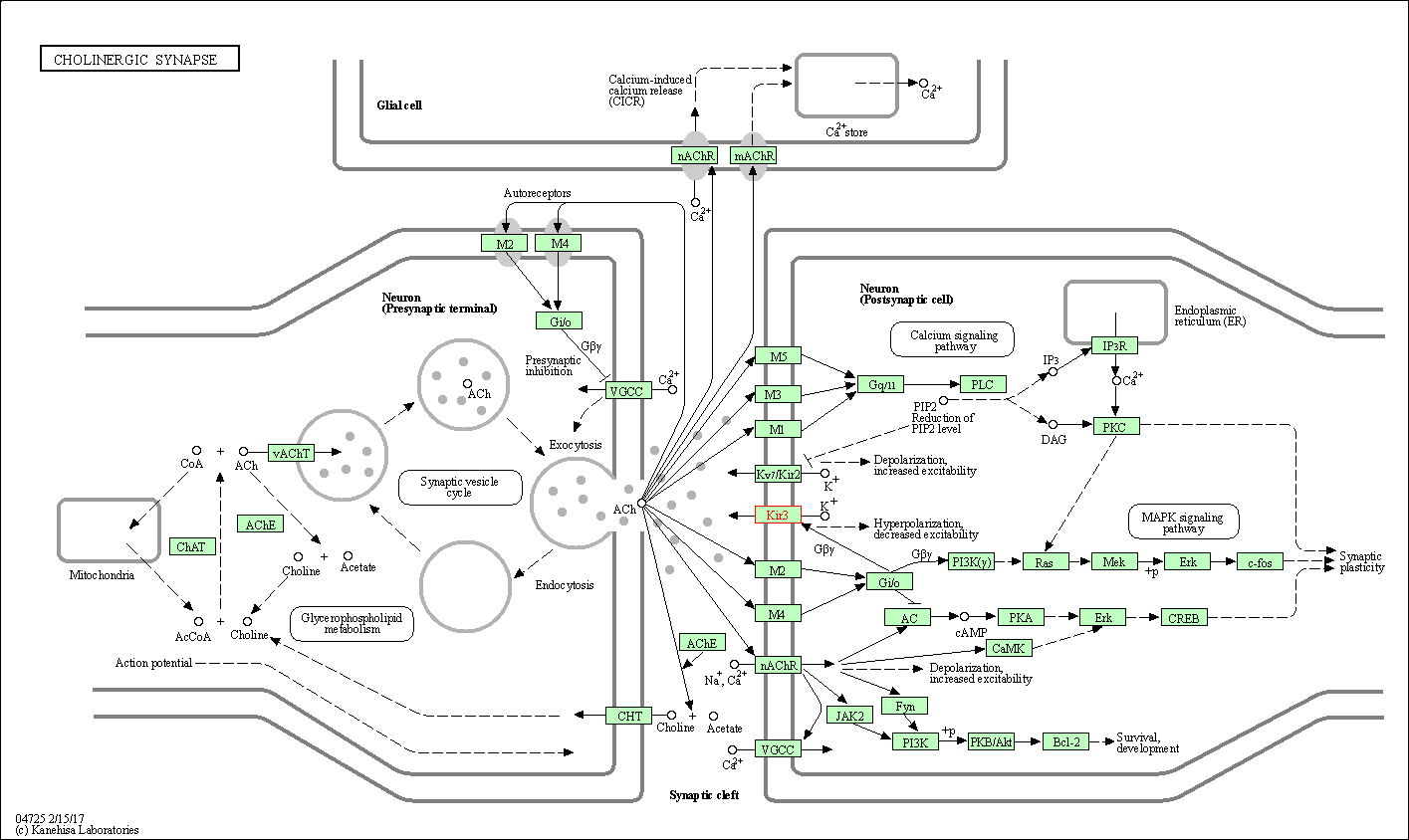
|
| Class: Organismal Systems => Nervous system | Pathway Hierarchy | ||
| Serotonergic synapse | hsa04726 | Affiliated Target |
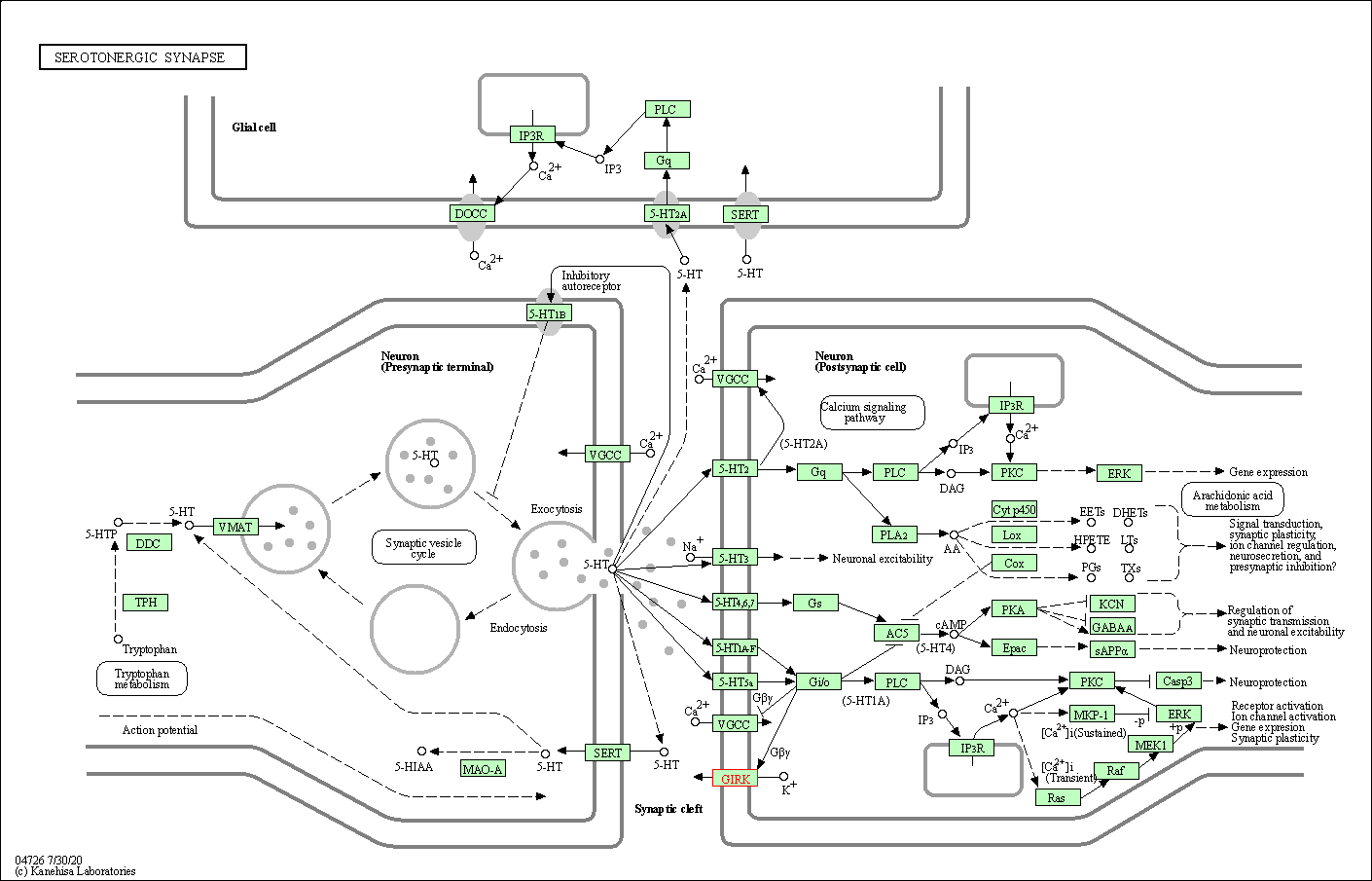
|
| Class: Organismal Systems => Nervous system | Pathway Hierarchy | ||
| Dopaminergic synapse | hsa04728 | Affiliated Target |
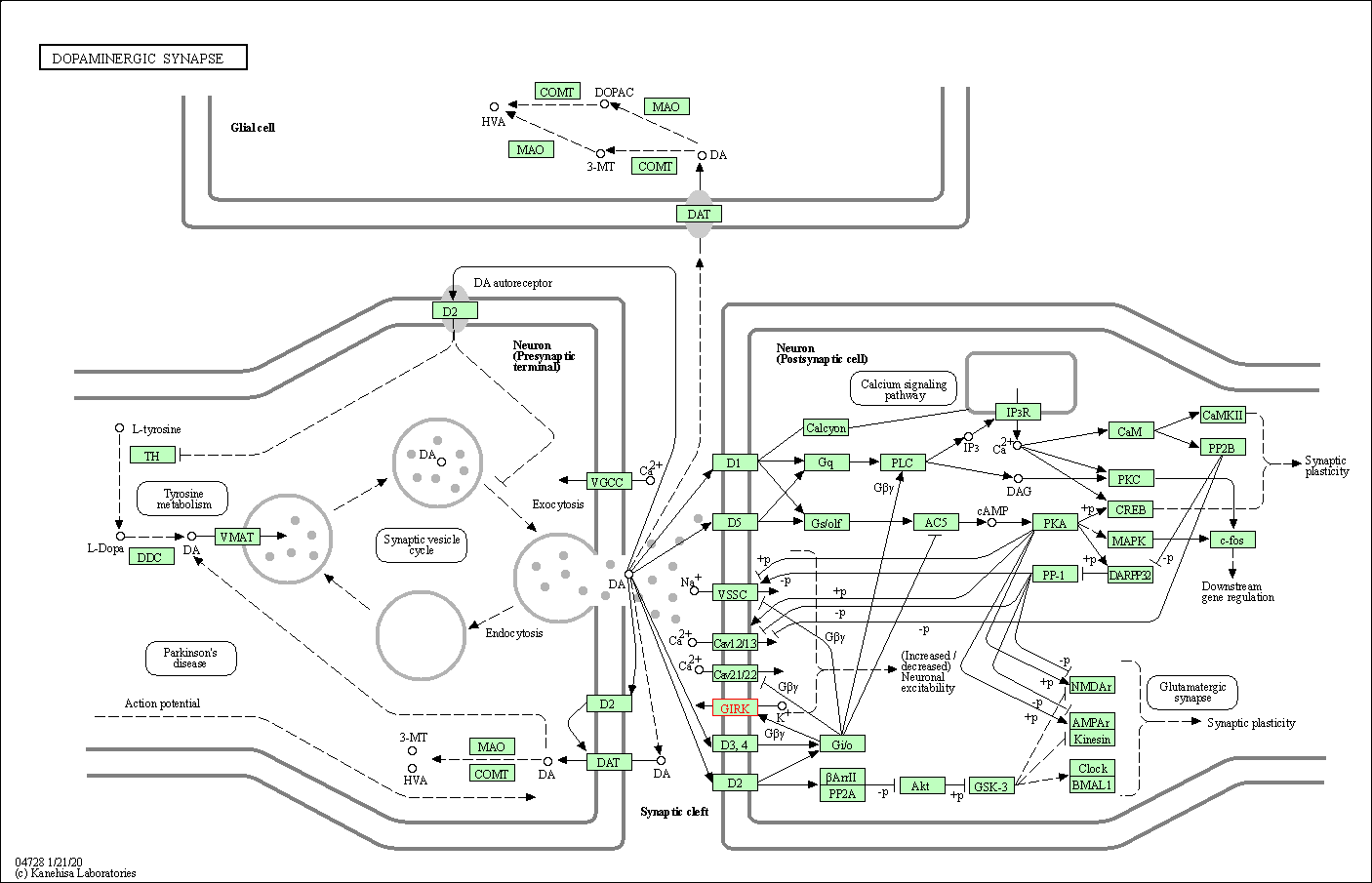
|
| Class: Organismal Systems => Nervous system | Pathway Hierarchy | ||
| Estrogen signaling pathway | hsa04915 | Affiliated Target |
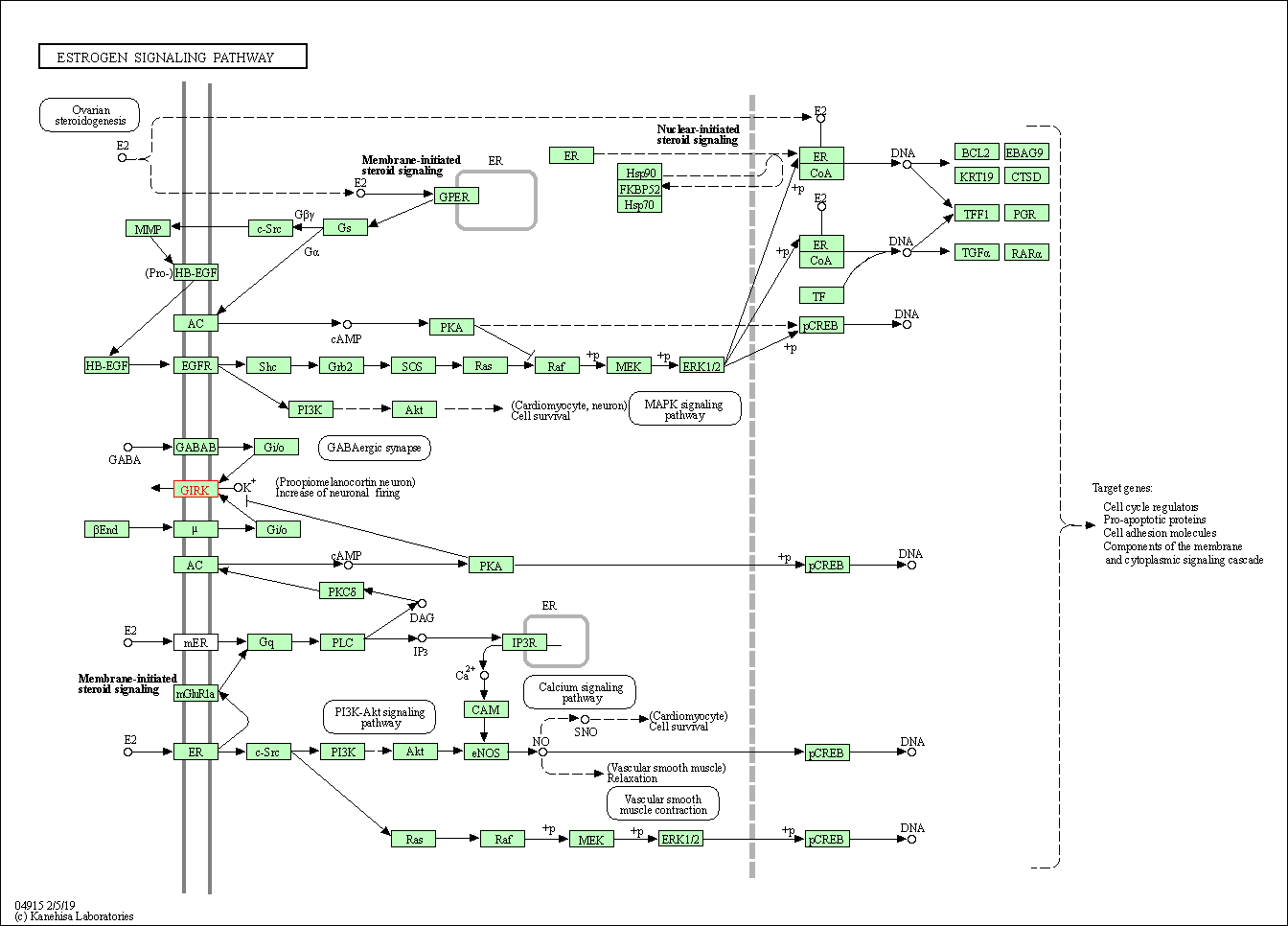
|
| Class: Organismal Systems => Endocrine system | Pathway Hierarchy | ||
| Oxytocin signaling pathway | hsa04921 | Affiliated Target |
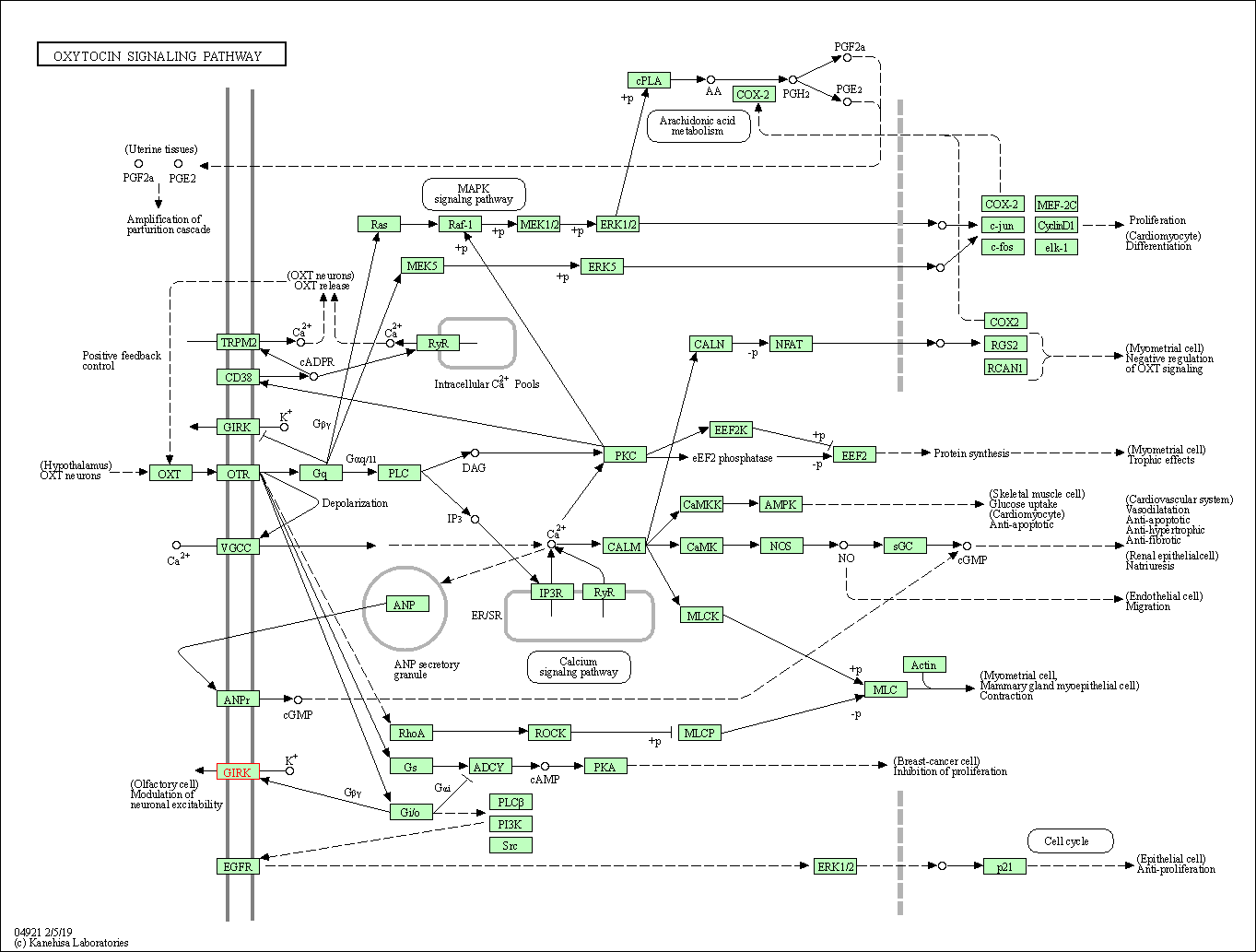
|
| Class: Organismal Systems => Endocrine system | Pathway Hierarchy | ||
| GnRH secretion | hsa04929 | Affiliated Target |
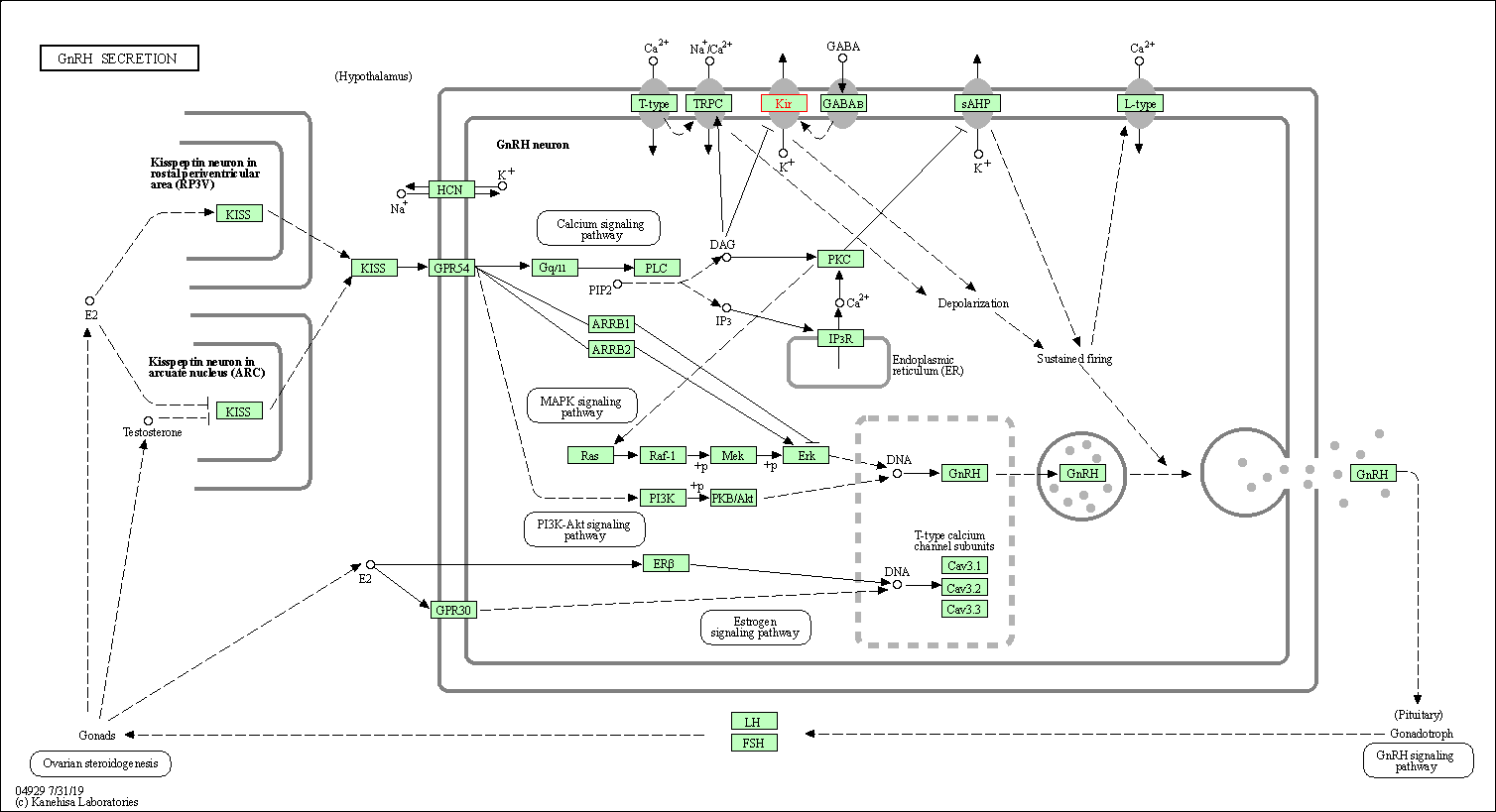
|
| Class: Organismal Systems => Endocrine system | Pathway Hierarchy | ||
| Click to Show/Hide the Information of Affiliated Human Pathways | |||
| Degree | 2 | Degree centrality | 2.15E-04 | Betweenness centrality | 2.02E-04 |
|---|---|---|---|---|---|
| Closeness centrality | 1.57E-01 | Radiality | 1.23E+01 | Clustering coefficient | 0.00E+00 |
| Neighborhood connectivity | 1.50E+00 | Topological coefficient | 5.00E-01 | Eccentricity | 13 |
| Download | Click to Download the Full PPI Network of This Target | ||||
| Target Affiliated Biological Pathways | Top | |||||
|---|---|---|---|---|---|---|
| KEGG Pathway | [+] 9 KEGG Pathways | + | ||||
| 1 | Circadian entrainment | |||||
| 2 | Retrograde endocannabinoid signaling | |||||
| 3 | Glutamatergic synapse | |||||
| 4 | Cholinergic synapse | |||||
| 5 | Serotonergic synapse | |||||
| 6 | Dopaminergic synapse | |||||
| 7 | Estrogen signaling pathway | |||||
| 8 | Oxytocin signaling pathway | |||||
| 9 | Morphine addiction | |||||
| Panther Pathway | [+] 3 Panther Pathways | + | ||||
| 1 | Heterotrimeric G-protein signaling pathway-Gi alpha and Gs alpha mediated pathway | |||||
| 2 | Muscarinic acetylcholine receptor 2 and 4 signaling pathway | |||||
| 3 | GABA-B receptor II signaling | |||||
| Pathwhiz Pathway | [+] 1 Pathwhiz Pathways | + | ||||
| 1 | Muscle/Heart Contraction | |||||
| Reactome | [+] 2 Reactome Pathways | + | ||||
| 1 | Activation of G protein gated Potassium channels | |||||
| 2 | Inhibition of voltage gated Ca2+ channels via Gbeta/gamma subunits | |||||
| WikiPathways | [+] 4 WikiPathways | + | ||||
| 1 | Calcium Regulation in the Cardiac Cell | |||||
| 2 | G Protein Signaling Pathways | |||||
| 3 | Neurotransmitter Receptor Binding And Downstream Transmission In The Postsynaptic Cell | |||||
| 4 | Potassium Channels | |||||
| References | Top | |||||
|---|---|---|---|---|---|---|
| REF 1 | Direct activation of inward rectifier potassium channels by PIP2 and its stabilization by Gbetagamma. Nature. 1998 Feb 19;391(6669):803-6. | |||||
| REF 2 | ML297 (VU0456810), the first potent and selective activator of the GIRK potassium channel, displays antiepileptic properties in mice. ACS Chem Neurosci. 2013 Sep 18;4(9):1278-86. | |||||
If You Find Any Error in Data or Bug in Web Service, Please Kindly Report It to Dr. Zhou and Dr. Zhang.

